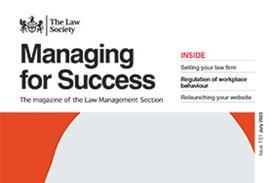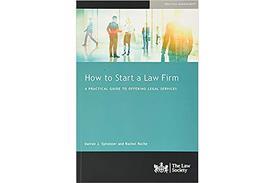Zulon Begum and Dr Robert Millard explore how artificial intelligence and private equity are changing the face of mergers and acquisitions – and how to stay competitive in this evolving landscape


Law firm mergers have always been a feature of the legal landscape, but the context in which they occur is changing. Historically, these mergers have adhered to established patterns, often driven by necessity, rather than solely strategic considerations. While the mergers and acquisitions (M&A) process shares similarities with that of other professional service firms (PSFs), legal industry mergers involve distinctive elements such as obtaining partner consent, ensuring conflict clearance, maintaining client continuity, achieving cultural alignment and adhering to regulatory requirements.
Today, we stand at the threshold of a new era catalysed by two forces: generative artificial intelligence (GenAI) and private equity (PE). How will the strategies that underpin law firm mergers, and the processes by which they are executed, differ in this new environment? What should law firm leaders do?
GenAI: a transformational force
Since the COVID-era lull, law firm mergers have been ticking upwards again. Research shows how economic, regulatory or technological shocks trigger merger waves; we may be at the early stage of such a wave, one that is potentially larger than that which followed the global financial crisis of 2008.
If GenAI proves to be the transformational force many expect, then law firm merger motives, selection criteria and measures of success will all likely be rewritten. Those that transition to new operating models early will open gaps that laggards struggle to bridge, turning the latter into acquisition candidates – often for their digital assets as much as, or more than, their human capital.
Competitive advantage

GenAI is changing the drivers of competitive advantage in law firms. Where partner-led competencies, relationships and brand once formed the bedrock of value, digital assets, governed data and repeatable, digitally enabled processes will now play a central role.
In practical terms, GenAI is transforming both how legal work is done and the operating model through which value is delivered. In the past, mergers were about scale, market share, client lists and practice-area synergies. Moving forward, M&As will increasingly be motivated by the desire to aggregate data, standardise methods and combine knowledge into better tools and services. The most valuable firms will be those that own – and effectively use – diverse, well-governed data to deliver services. If familiar patterns from other sectors hold, consolidation is likely.
Furthermore, competencies that were once peripheral have now become board-level concerns: training and governing domain-specific models, unlocking analytics-powered service lines and building proprietary delivery platforms that integrate securely with client systems. Off-the-shelf tools will remain attractive for codifying existing workflows, but true differentiation will flow from firm-specific data, methods and service designs that create outcomes competitors cannot easily match. This is the essence of sustainable competitive advantage.
New merger imperative
GenAI and adjacent technologies push costs down while allowing more work to be done with fewer people. Markets are becoming hypercompetitive. Clear, digitally enabled value propositions that clients find appealing are now crucial. Acquisitive firms are likely those that are already well advanced with transitioning their operating models; they will pursue mergers to deepen capabilities and extend service portfolios. Firms that lag will see market share and profitability erode and become targets.
Put differently, a new kind of merger imperative is emerging, especially for acquiring firms. Defensive mergers have always been about necessity, and this is unlikely to fundamentally change. However, for acquisitive law firms, things are different. Such mergers have traditionally been about growing scale, entering new markets and securing human capital that enables the firm to expand into new practice areas. Now, client value is being delivered at least as much by client-facing algorithms as the professionals who operate or support them. GenAI-enabled tools dissolve distance, making it easier for law firms to service client needs in markets where they don’t have a presence. Firms with the best digital assets can deliver more complex services at greater scale and lower cost. Human elements remain crucial, but firms that successfully employ cutting edge, digitally enabled systems outcompete those firms that fail to invest.
Disruptive innovation
Harvard Business School professor Clayton Christensen’s theory of disruptive innovation is instructive here. Christensen hypothesised that new entrants to the market often begin with offerings that their more established counterparts dismiss as cheaper, poorer quality or simply ‘not what clients want’. Over time, however, the quality and scope of these offerings improve, and share starts to shift. Market leaders then face a fork in the road: adopt the new technologies / operating models and outcompete on the new terms or cede core markets.
For incumbent leaders, in-firm innovation is therefore pivotal. ‘Fast follower’ can be wiser than ‘first mover’ when technology and standards are still evolving; let others absorb early risk, then acquire capabilities that work. M&A can also be the best route to self-disruption, where cultural inertia or partnership economics make change difficult to deliver organically. Mergers, whether with other law firms, alternative legal service providers or legal tech, compress the time required to digitalise service delivery.
Traditional law firm models cast lawyers as those who ‘do the work’, with technologists and other professionals in support. Structural barriers in some markets, such as ownership rules and prohibitions on fee or profit sharing and the unauthorised practice of law, have entrenched this phenomenon. Now, this dynamic is shifting. Firms are integrating lawyers and technologists tightly, with some (like US law firm Crosby Legal) even co-locating both in the same workspaces. Scarcity of GenAI expertise, evidenced by stellar packages being offered to the best talent in top technology companies, is forcing firms to rethink partnership, equity and reward. Winning models will treat technology and data as core strategic assets rather than peripheral support.
Applying Christensen’s theory to this, law firms delivering the most complex and premium of legal services will likely ‘retreat to quality’ – shrinking in headcount, but not in revenue or profitability. To compete, mid-tier law firms will need to assertively use technology to drive down price while growing market share. Inevitably, this will need to involve mergers. For the leading mid-tier firms, becoming expert at quick, sequential acquisitions will be crucial.
Value delivery
This raises another issue. As value delivery migrates from humans to algorithms and governed workflows, law firm balance sheets will change. Traditional assets are thin – receivables, depreciating IT, leaseholds, office equipment – with intangible value residing in human capital that is highly mobile. Mergers have therefore usually involved partnership combinations with neither shares nor cash changing hands. In a GenAI world, law firms can capitalise owned digital assets that create value independently. It follows that, in future law firm mergers, cash might very likely change hands – and a potentially substantial amount of it.
Private equity: a key enabler
PE is flooding into the UK legal sector, especially into firms with strongly regulated and/or process-driven practices that lend themselves well to scaling through platforms. These include practices such as real estate, personal injury, employment and low-cost advisory services to non-high-net-worth private clients and small / medium-sized enterprises. Dispute resolution is also attracting interest as an extension of long-established litigation funding.
Potential advantages
From the PE perspective, such firms can produce predictable cash lows. ‘Alpha’ (returns above benchmark) is created through operating improvements, focused strategy and roll-ups that drive efficiency, extend reach and consolidate data, technology and client relationships. Outcomes in adjacent PSFs (such as accountancy and certain consulting niches) show that these playbooks can work.
From the perspective of law firms, especially those smaller and less profitable firms for which debt is expensive and difficult to secure, and/or where succession is problematic, PE appears to be an attractive option to manage bank debt or increasing partner capital loans. Some appear to assume that they will be able to continue essentially as before, with the new funding being invested in incremental ‘catch-up’ improvements in technology, or in lateral hires or other growth tactics. For some founders, PE appears to be a way to capitalise their investment in growing their firms. These assumptions are risky.
Investor appetite
For firms to be of interest, PE investors must believe that a real opportunity exists for alpha. They must trust that the leaders and management of the firm are willing and able to drive the changes necessary to unlock it. This means addressing underperformance, tightening pricing, standardising delivery, professionalising business development and client relationship management, growing recurring revenue, reducing client-concentration risk, aligning partner incentives with firm-level performance and managing the heightened regulatory exposure. They will want to see an implemented operating model that scales beyond individual rainmakers.
But this is just the start. Such changes will develop incremental improvement, but likely not enough to deliver the profit uplift that PE investors typically seek. There is also little mentioned here that a well-led, strategically astute partnership cannot achieve on its own, without resorting to external equity capital.
More sophisticated PE plays will back firms that intend to seize technology-driven opportunities, not merely defend against them. This implies a willingness to self-disrupt – to radically drive down unit cost, pursue market share aggressively and adopt genuine client-centricity; to implement service designs anchored to outcomes, reliability and transparency, with pricing to match. It implies moving beyond the genteel approach to competitiveness that has characterised legal services and embracing client-centricity in a way that is rare in legal services; to become hypercompetitive, in a market that has become that and will become more so.
Key considerations for firms
Ultimately, PE requires a clear, lucrative exit – typically, an initial public offering or a sale to a strategic buyer or secondary sponsor. The conventional PE model depends heavily on this, within a relatively short timeframe. Some recent PE investments in PSFs have resembled ‘quasi-debt’, with robust protections and baked-in exit arrangements rather than pure equity risk, but the conventional model still depends on realisable equity value. For law firm leaders, the decision is not whether to seek or accept PE investment, but to decipher whether the firm has a credible programme to create durable advantage and thus a valuable exit, without undermining partner expectations, client trust, professional standards, firm culture or long-term market positioning.
To accept PE backing with open eyes, law firm leaders must be very clear in their own minds what they will do to grow alpha and build the kind of sustainable competitive advantage that ensures its most important clients continue to prefer the firm to its rivals.
To deliver alpha with external investors and GenAI, law firm leaders must also embed a culture of regulatory compliance into their growth strategy. The SRA’s warning notice, Mergers, acquisitions and sales of law firms, makes clear that client interests and confidentiality must remain paramount before, during and after any transaction. This means that governance, data handling and due diligence processes must be robust enough to withstand scrutiny, especially where AI tools are involved or where client data is exposed to external investors. Missteps, even without dishonesty, can trigger enforcement. In this environment, maintaining competitive advantage demands more than capital or technology. It requires leadership that can balance innovation with integrity, and growth with accountability.
Conclusion
The logic of law firm mergers is changing. Pre-GenAI, combinations were mainly about geographic cover, establishing new practices or doubling down on the firm’s strengths, building scale or solving an intractable problem (such as succession, declining performance and so on). These factors still matter, but the emphasis is shifting. In the age of GenAI, the business case for either merger or PE investment must include the firm’s strategy to build sustainable competitive advantage around data and rights, standardised methods and workflows, platforms and other digital resources, combined with its human capital. These factors need to be considered and built into decision-making processes when the initial strategy is being formed, in the lead-up to the deal (including due diligence) and during post-merger integration or post-deal restructuring. This affects all aspects of the firm across both practice and business services, the boundaries between which have become far more porous.
GenAI will favour firms that can learn quickly, deliver reliably, and prove both. Mergers that build real sources of sustainable competitive advantage as GenAI becomes ubiquitous and far more capable will succeed where less visionary strategies fail. PE will accelerate change where it sees credible paths to alpha, trustworthy leadership, scalable operating models and clear exits.
For leaders, the practical test for any deal is simple: does it advance those capabilities at a sensible risk-adjusted price? If yes, move decisively. If no, resist the lure of short-term revenue and headcount. In a GenAI and PE era, scale that cannot learn, standardise and evidence quality is just weight. The firms that act now, through targeted acquisitions, alliances or full mergers, will build advantages others cannot easily copy. The rest will have the future decided for them.
















